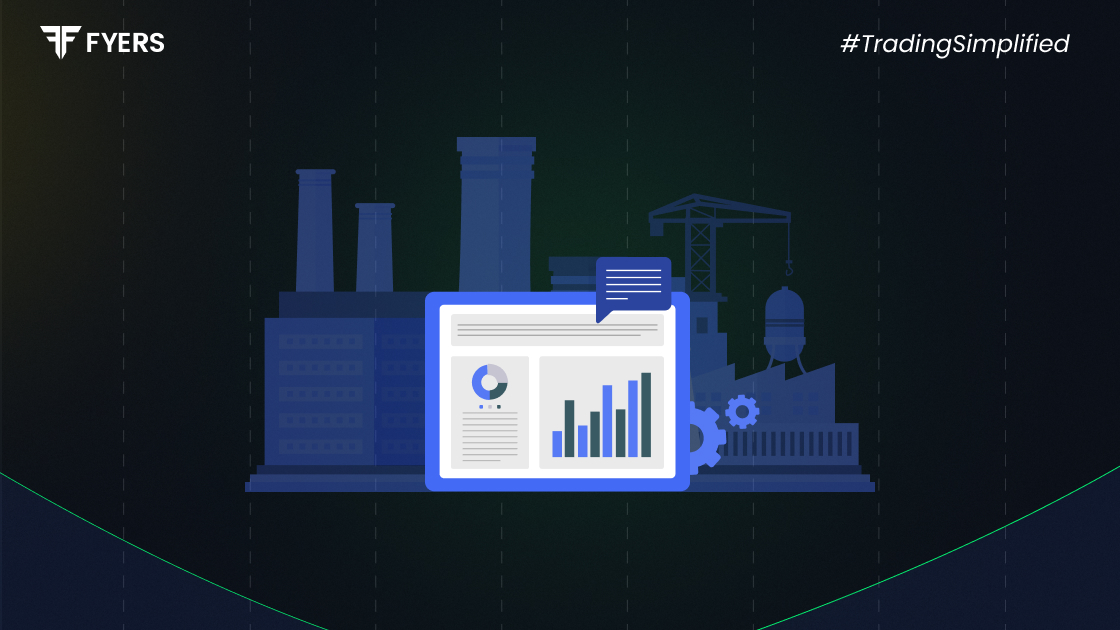

 15 Sep, 2025
15 Sep, 2025
 5 mins read
5 mins read

Understanding the forces shaping a particular industry is vital for making informed business and investment decisions. That’s where industry analysis comes into play. Whether you’re an entrepreneur, investor or policymaker, knowing how to evaluate an industry’s structure, trends and competitive dynamics can give you a clear strategic advantage.
In this blog, we’ll explore the meaning, significance, different types, and methods of conducting industry analysis, along with practical examples and key resources tailored for the Indian context.
Industry analysis is a research process that examines the economic, competitive and market factors affecting a specific industry. It involves evaluating everything from market size and growth potential to customer behaviour, regulatory environment, and key players.
The goal is to understand how external and internal elements influence the profitability and risks associated with operating in a particular sector.
Industry analysis plays a crucial role in business strategy, investment planning and risk management.
Here’s why it matters:
Strategic Planning: Helps businesses identify opportunities and threats in their environment.
Investment Decisions: Guides investors in selecting industries with strong growth prospects.
Benchmarking Performance: Offers insights for comparing a company’s performance with industry standards.
Market Entry: Assists startups and new entrants in understanding the competitive landscape before entering a sector.
Policy Formation: Enables policymakers to assess the economic contribution and challenges of different sectors.
There are several frameworks to conduct an industry analysis. Each provides a unique lens to examine industry dynamics.
|
Framework |
Description |
|---|---|
|
PESTLE Analysis |
Evaluates Political, Economic, Social, Technological, Legal and Environmental factors affecting the industry. |
|
Porter’s Five Forces |
Analyses competitive intensity by studying five forces: threat of new entrants, bargaining power of suppliers and buyers, threat of substitutes, and industry rivalry. |
|
SWOT Analysis |
Focuses on a sector’s internal strengths and weaknesses, and external opportunities and threats. |
|
Value Chain Analysis |
Identifies key activities that add value within an industry. Helpful in finding areas for cost optimisation or innovation. |
Here’s a step-by-step guide to performing a robust industry analysis:
Define the Industry: Clearly establish the scope of the industry you are analysing.
Gather Data: Use reports, databases, government publications and market research firms.
Evaluate Market Structure: Assess factors like market size, segmentation, demand-supply trends, and entry barriers.
Analyse Competition: Identify key players, market share, pricing strategies and product differentiation.
Study Trends & Regulations: Examine technological changes, policy developments, and macroeconomic conditions.
Draw Insights: Interpret findings to make informed strategic or investment decisions.
Industry analysis is valuable to a wide range of stakeholders:
Entrepreneurs: To validate business ideas and market feasibility.
Investors: To choose sectors with strong growth potential and understand risks.
Corporates: To benchmark performance and refine business strategy.
Consultants: To advise clients with data-backed recommendations.
Government & Policymakers: To draft informed sectoral policies.
Let’s take the Indian Electric Vehicle (EV) industry as an example:
Market Overview: The EV sector in India is witnessing rapid growth, driven by rising fuel costs, environmental concerns and government subsidies.
Key Players: Tata Motors, Ather Energy, Ola Electric, Mahindra Electric.
Opportunities: Increasing urbanisation, push for green mobility, and expanding charging infrastructure.
Challenges: High upfront costs, range anxiety, and dependency on imported batteries.
Regulatory Environment: Government schemes like FAME II and state-level EV policies are accelerating growth.
This kind of sectoral evaluation can help investors decide if the EV space aligns with their goals or help startups assess entry opportunities.
Here are some reliable sources to conduct industry research in the Indian context:
IBEF (India Brand Equity Foundation) – Sector reports and insights on Indian industries.
CMIE (Centre for Monitoring Indian Economy) – Provides economic and business data.
Statista India – Global and Indian market statistics and projections.
Ministry Websites – Industry-specific data from government portals (e.g., Ministry of Commerce & Industry).
NSE/BSE – Stock exchange data and sectoral indices.
CRISIL & ICRA Reports – Sectoral credit ratings and performance reviews.
Industry analysis isn’t just a one-time exercise; it’s an essential ongoing process for anyone involved in business or investing. It equips you with the insights needed to navigate market complexities, anticipate trends, and make strategic decisions. With frameworks like PESTLE and Porter’s Five Forces, and a structured approach to research, you can unlock a deeper understanding of any industry, especially in a dynamic economy like India’s.
The most commonly used frameworks are PESTLE Analysis, Porter’s Five Forces, SWOT Analysis, and Value Chain Analysis. These help in understanding the external environment, competitive intensity, internal capabilities, and value creation potential of an industry.
Start with identifying the industry clearly and collecting data on market size, trends, and competitors. Use SWOT and Porter’s Five Forces to assess opportunities and challenges. Focus on understanding customer needs, pricing trends, and regulatory barriers that could affect your entry and growth.
Market analysis focuses on demand-side factors like customer behaviour, pricing, and sales trends within a specific target market. Industry analysis looks at the broader structure, including supply chain, competition, regulations, and overall profitability of the sector. Both are essential but serve different purposes.
While it cannot guarantee success, industry analysis significantly improves decision-making. It helps identify risks, understand the competitive landscape, and uncover growth opportunities, all of which are critical for planning and sustainability.
Calculate your Net P&L after deducting all the charges like Tax, Brokerage, etc.
Find your required margin.
Calculate the average price you paid for a stock and determine your total cost.
Estimate your investment growth. Calculate potential returns on one-time investments.
Forecast your investment returns. Understand potential growth with regular contributions.